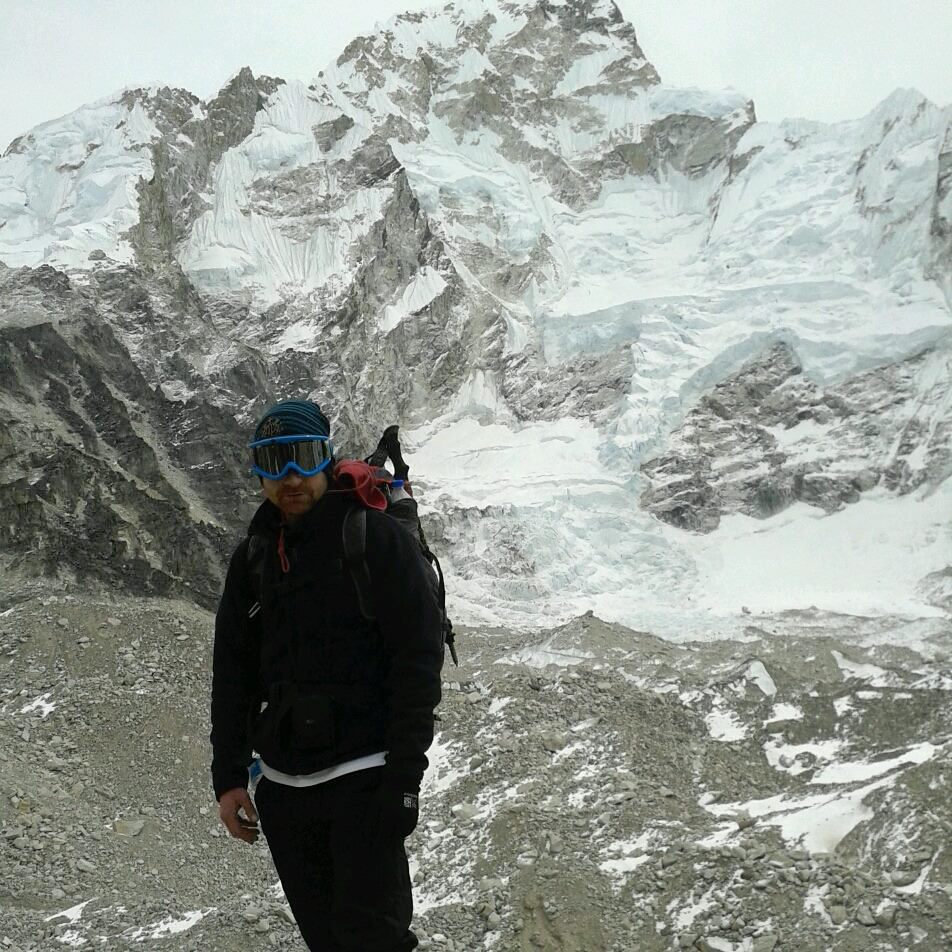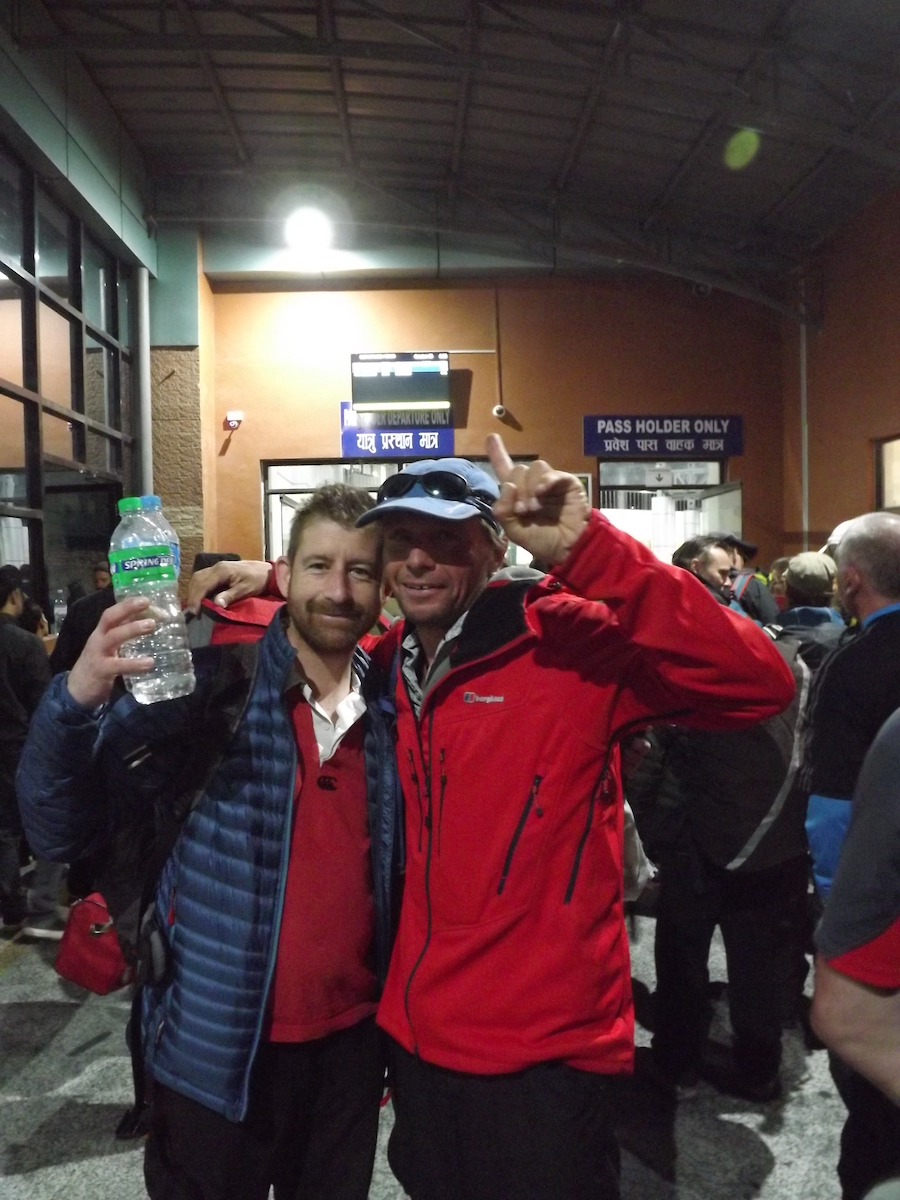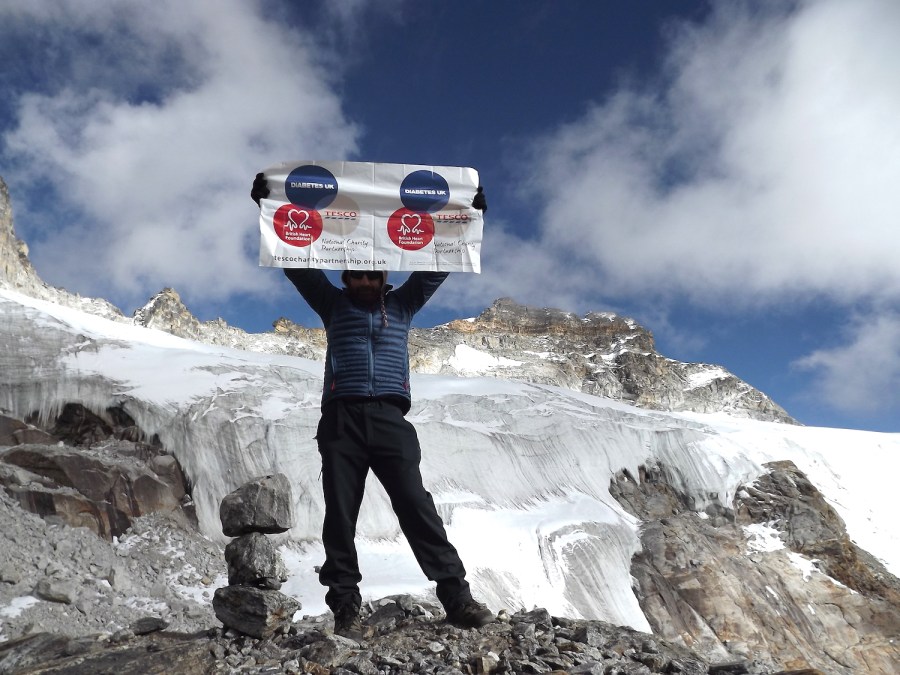TGO reader Carl Bevan has recently moved to the Lake District. We got in touch to find out why he’s raising £1M for charity – all through organising treks for others
Trekking is a major passion for you. Tell us about your most recent journey.
My last trek was in the autumn of 2016 with 9 colleagues to climb Mera Peak, Nepal. This is the highest I have been and it was simply brilliant. It’s hard work, of course – you are away from home for 3 weeks – but it is simply a stunning challenge. The scenery is outstanding throughout and being in the high mountains was a huge privilege. It was also important to me to be able to go back to Nepal and help (in a small way) as the country seeks to recover from the awful earthquake in April 2015.
Why did you choose Mera Peak?
In 2013 I did the Everest Base Camp trek, and our lead guide and now good friend Rolfe Oostra (who runs 360 Expeditions with his wife Marni Oostra) was enthusiastic about the idea. I have been fortunate to team up with Rolfe and Marni in Kenya and Tanzania as well as Nepal. Over a cold beer in Lukla, after the trek, I asked him what next – and it was either Mera Peak or the slightly more technical Island Peak. Mera Peak is regarded as the highest peak an amateur trekker can do in the Himalaya, so that was that – decision made!
Mera Peak was hugely rewarding. To use crampons and an ice axe crossing the glacier made it feel very serious, and for a short time I felt like a proper climber! I can only imagine what it must have been like for my heroes such as Sir Chris Bonington, Doug Scott, Dougal Haston and the like who thrived at altitude and reached legendary status. It was also very tough coming down, with never-ending steep paths, but the pull of getting back to Kathmandu and the fun and games you can have there drove me on. Three brilliant weeks and I would head back there tomorrow. The Himalayan mountains are truly stunning!
Tell us about the treks you have helped organise, and why you’re raising money for charity.
I have raised 7 treks to date and all on the back of losing a good friend to cancer. I didn’t want his early departure to be in vain so set myself a challenge of raising £1M for charity. So far, colleagues and friends have raised some £400,000 for charities including the British Heart Foundation, Cancer Research UK and Diabetes UK. I get a huge buzz seeing people who have never been trekking before heading off to Nepal, Kenya, Peru and Tanzania and visiting amazing new places and trekking.

At Everest Base Camp
Why did you decide to move to the Lakes? How are you finding it so far?
I was lucky enough to get one of those phone calls out of the blue from a recruitment consultant. When the penny dropped that I could combine an exciting new job with a pay rise, and to get away from the weekly train commute to London and live in the Lake District, it was a bit like winning the lottery! I still keep pinching myself. I have a stunning view from my house and long may it continue.
I live in a quiet hamlet near Kendal as I need to be close to the M6 for work. Being local to the hills is great – you have the ability to play around with the weather and choose your days. I think you gain a little bit more knowledge about being off the beaten track too. Having more time allows you to see more areas and I am appreciating parts of the Lakes that I might not have ventured to had I only been coming here on holidays. For example, I don’t think I would ever have ventured into Kentmere or up Black Combe, but both are hidden gems. You get to appreciate the views on a daily basis with all the changes of the weather and the seasons. I also childishly enjoy cursing the tourists when I get stuck in traffic…
What are your favourite Lakeland walks?
Anywhere in Wasdale or Buttermere makes me very happy, but if I had to choose one then it would be the Yewbarrow, Red Pike and Pillar circuit, ending up in the Wasdale Head Inn with a pint.
What would you say to people who are active in the UK hills but have never trekked overseas?
Whilst we are blessed in the UK with great countryside and national parks, trekking overseas takes things to the next level. I would encourage anyone thinking about it to just do it! It’s the whole package: being away from home comforts, travelling, eating different food and the physical challenge with the effects of altitude. However it is all about attitude. Anyone who is reasonably fit and prepared to do a bit of advance training will get much more out of it. There are so many amazing places and challenges out there, some near to home and some far away. No truer saying than “One life live it!” I would encourage anyone to give it a try – although best not to start with Mera Peak.
It would be sensible to start on an easier and shorter trek if going overseas for the first time. Jebel Toubkal in Morocco, Mount Kenya, or Machu Picchu are possible objectives suitable for a first-timer. It’s important to build up experience. Understanding how you adapt to altitude and seeing how you cope with the physical and mental challenges of an overseas trek would be prudent ahead of landing at Lukla and thinking that you can easily summit Mera Peak! Mera was far and away the hardest summit night I have done, and at over 6,000m you are seriously high for an amateur. Climbing at this altitude sharpened my admiration of those who climb above 8,000m and throw in technical climbing – true athletes!

Mera Peak 2016
Describe your best mountain moment.
Although I could say being on top of Kilimanjaro with the sunrise, or finally getting to the top of Mera Peak – both amazing moments – it would be the feeling of just being out in the dales or the Lakeland fells with my daughters (11 and 12). That always makes me incredibly happy and humble. Just getting out and about in the mountains is priceless. That said, I am getting itchy feet again and ready to get back to Mount Kenya in 2018 raising money for Transaid.
Many thanks to Carl for chatting with us about his adventures. If you’d like to donate to his current fundraising effort for Transaid, check out his JustGiving page.
All images © Carl Bevan








